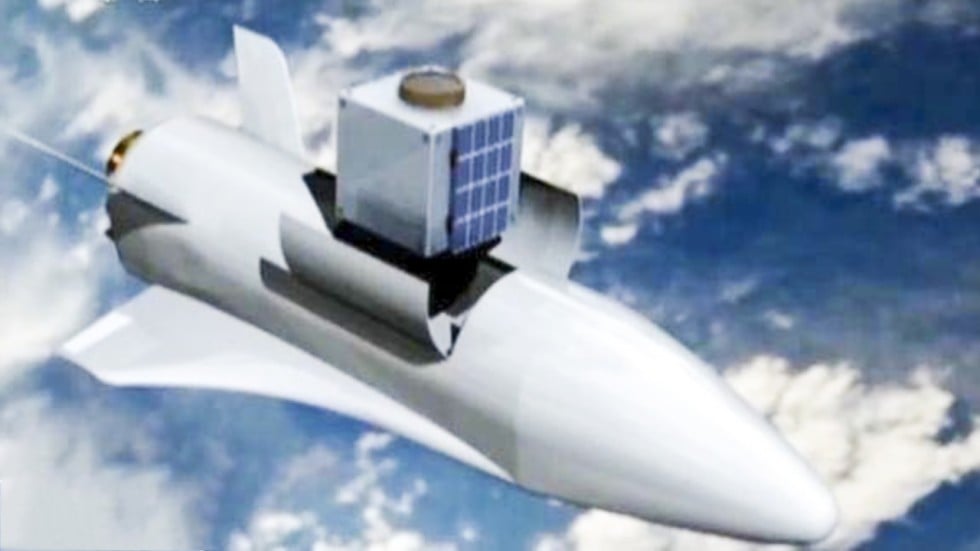 |
| Talk on trade: (from left) Interbase Resouces Sdn Bhd MD and Lelong.com.my co-founder Richard Tan, Chong and SME Association of Malaysia national deputy president Ong Chee Tat during a panel discussion on Global is the New Local: The Changing International Trade Patterns of Small Businesses in Asia Pacific, organised by FedEx. |
More SME seen to be embracing technology
WHILE its been a constant lament that local small and medium-sized enterprises (SMEs) are not embracing digital technology, a new survey seems to suggest otherwise.
A recent FedEx-commissioned study on trends being adopted by SMEs in Asia Pacific (Apac) has revealed a high adoption of new technologies among local SMEs.
According to the study, Malaysia ranks fourth (among nine Apac countries surveyed) in digital platform implementation and third in adopting Industry 4.0 technologies.
Entitled “Global is the New Local: The Changing International Trade Patterns of Small Businesses in Asia Pacific”, the research revealed that an average of 88% of Malaysian SMEs are adopting digital economy platforms, such as e-commerce, mobile-commerce and social-commerce platforms.
FedEx Malaysia managing director S.C. Chong says it is critical for SMEs to take advantage of technological advancements as a catalyst to enter into new markets, improve customer service support and experience, and provide a more efficient end-to-end customer journey.
“SMEs are the engine of growth and form the backbone of Malaysia’s economy,” he says during a briefing on the survey, last week.
Chong adds that it is encouraging to see SMEs taking the initiative to grow their business through the adoption of new technologies, infrastructure-building, and expansion into international markets.
Citing the survey, he says that 61% of local SMEs are optimistic that the e-commerce platforms will help contribute to increased revenue growth in the next 12 months.
“The study also found that 69% of Malaysian SMEs have incorporated Industry 4.0 technologies into their operations such as mobile payments, automation software and big data / analytics in particular.”
Industrial Revolution 4.0 refers to the paradigm that machines are now able to autonomously adapt and coordinate their tasks to meet human needs.
The survey also shows a significantly high adoption rate of mobile payments among Malaysian SMEs at 90% (higher than the Apac SME average of 73%), with automation software and big data / analytics among the top Industry 4.0 technologies being used by SMEs at 84% and 77% respectively.
In addition, the survey also showed that 78% of respondents agreed that Industry 4.0 technologies have enhanced efficiencies in the supply chain and distribution channels, while helping reduce challenges brought by cross-border payments.
The results of the survey were based on interviews with 4,543 senior executives of SMEs in nine markets in Apac between March and April 2018. The markets included in the research were China, Hong Kong, Japan, Malaysia, Philippines, Singapore, South Korea, Taiwan, and Vietnam.
The interviews were split equally by market with a representative mix of company sizes: micro (one to nine full-time employees), small (10 to 49 full-time employees) and medium (50 to 249 full-time employees).
Each market had an average of 500 respondents.
SME Association of Malaysia national deputy president Ong Chee Tat says SMEs and Industry 4.0 are key components towards the growth of the nation, as Malaysia works towards achieving a high-income economy.
“While technology may have reduced the gap between SMEs and larger industry players, SMEs still face various challenges in the adoption of the latest trends or tools in technology. Most SMEs may find that they lack sufficient finances, knowledge or workforce talent to adopt these new technologies.
“As such, we (the SME Association) are cognisant of the barriers to technology-adoption and continue to guide, empower and support SMEs by providing strategic advice or counsel and initiating networking platforms to facilitate knowledge exchange.”

Ong says that the SME Association is currently looking to set up an SME Academy to help provide training for local start-ups.
“We hope to be able to launch this academy by this year,” he says.
The survey also revealed that 95% of Apac SMEs have made use of digital platforms such as e-commerce (82%), mobile-commerce (72%) or social-commerce (74%) in their business operations.
“In Malaysia, the top social media platforms are Facebook, WhatsApp and Instagram,” says Ong.
According to the survey, the top social media platform used in Apac markets is Facebook, with the exception of China (WeChat) and Taiwan (Line).
In comparison, Malaysia has an overall higher adoption rate of e-commerce (90%), mobile-commerce (87%) and social-commerce (86%) compared to other markets in Apac. Also, the survey says 61% of Malaysian SMEs expressed confidence that the digital economy will help reduce barriers to finding global customers beyond Apac.
Chong says the finding is strongly supported by Malaysia having 146% mobile penetration, 22 million internet users, 18 million active social media users, and seven million online shoppers, leading to Malaysia ranking 31st among the most tech-ready countries around the world.
Meanwhile, Interbase Resouces Sdn Bhd managing director and Lelong.com.my co-founder Richard Tan says that by educating SMEs and raising their awareness on the digital economy, there will be a rise in brick-and-mortar SMEs having an online presence to augment and complement their business.
“At Lelong.my, our integrated online platform which comes with services such as e-payment solutions and digital storefronts, has allowed us to extend our reach to capture the younger generation of increasingly digital savvy customers and merchants.
“As an online retail platform, we continuously evolve and transform ourselves to ensure that we fully understand the consumer journey and experiences to make it a seamless, pleasant one.”
He also says that the rise in digital platforms will not result in brick-and-mortar outlets becoming obsolete.
“I believe they will complement each other,” he says, adding that this is why it’s important for companies to have both a physical and online presence.
“I might see a product at a store somewhere, but may decide to purchase the item off of the company’s website. On the flipside, I might see something online that I might like, but would want to physically see it first, before deciding to buy.”
Tan emphasises that it is in a situation like this that SMEs need to have a presence online.
“You need to have your content displayed on the Internet. If people can’t find your product on the web, they may just decide not to buy it at all. That’s the behaviour of the new group of consumers today.
“You have to digitize your content.”
Chong admits that having products and services accessible via the web nowadays is a given.
“However, there are still products and services that you can’t get online. But it’s important to be able to have your product on the web, so that people can learn about it and either buy it or choose to view it physically at your store.”
Growth opportunities
In conjunction with the recent “Take E-Commerce to the Next Level” conference by DHL Express Malaysia, the logistics firm said in a statement last week that there is great potential for Malaysian SMEs to grow their business overseas through e-commerce.
“By 2020, it is expected that one out of five e-commerce dollars will be generated through cross-border trade. Business to consumer (B2C) e-commerce has grown at a faster pace than most other industry sectors in recent years, with premium cross-border shipments growing from 10% to more than 20% of the volumes of DHL Express.
“This is further boosted by various incentives the government has provided to ensure that the local e-commerce sector has the potential to lift Malaysia’s total trade to RM2 trillion this year.”
Over 100 local SMEs attended the conference.
Its speakers included those from Amazon Global Selling, Payoneer, Everpeaks, Malaysia Digital Economy Corp (MDEC) and Malaysia External Trade Development Corp (Matrade), who shared their insights on the importance of logistics, digital marketing, payment options and sales methodologies as part of the entire B2C ecosystem.
“These takeaways are meant to better equip local SMEs to meet the increasing demand of customers who seek faster fulfilment and more variety at cost-effective prices,” says DHL Express.
 In the same statement, e-commerce conglomerate Amazon encouraged more Malaysian SMEs to expand their business by tapping Amazon’s global reach.
In the same statement, e-commerce conglomerate Amazon encouraged more Malaysian SMEs to expand their business by tapping Amazon’s global reach.Amazon Singapore’s Amazon global selling head Gijae Seong says: “South-East Asia has quickly grown to be one of the most important regions for Amazon Global Selling.
“In the US alone, Amazon has over 150 million monthly unique visitors. We hope that more local SMEs will consider expanding their business globally on Amazon in the future.”
In addressing the challenges of SMEs to expand its presence on a global level, Matrade transformation and digital trade division director Noraslan Hadi Abdul Kadir points out that Matrade is Malaysia’s national trade promotion agency, and therefore has the mandate to promote local SMEs overseas.
“Our eTRADE Programme offers financial incentive valued at RM5,000 per company, which can be utilised to partially cover the on-boarding cost to be listed on world’s renowned e-Commerce platforms the likes of Amazon.com.
“We hope more SMEs can capitalise on the programme to kick-start their cross-border e-commerce business.”
Boost to property sector
The e-commerce boom is also set to be a boost to the local property market, with the industrial sub-sector being its biggest beneficiary.
According to the Valuation and Property Services Department’s (JPPH) Property Market Report 2017, the industrial sub-sector, though contributed the least to the overall property market last year , plays a significant role generating investments and employment opportunities.
“As Malaysia embraces Industrial Revolution 4.0 and the digital economy, a different ball game is expected of the industrial property sub-sector,” it says.
One initiative that is expected to support the sector’s performance, says JPPH, is the setting up of a Special Border Economic Zone in Bukit Kayu Hitam, which will be the new attraction for both domestic and foreign investors on the northern zone of Malaysia.
“Another is the establishment of a Digital Free Trade Zone (DFTZ), which will see KLIA as the regional gateway. The first phase of DFTZ is foreseen to have 1,500 small and medium enterprises participate in the digital economy and is expected to attract RM700mil worth of investment and create 2,500 job opportunities.
“On the same note, Cyberjaya will be transformed into a global technology hub and a smart city.”
In November, CIMB Research in a report said the industrial segment has a strong growth trajectory through acquisitions and organic growth, given the tight industrial space supply.
“Demand for new high-quality industrial assets will transform the segment, which has led to several new mega-distribution centres that carry high price tags as retailers start turning to logistics.
“Notably, UK-based retailer Marks & Spencer is building a 900,000-sq-ft distribution centre with one million products processing capability per day and will consolidate its 110 warehouses into just four.”
The sector is also expected to be bolstered by the growth of the e-commerce segment.
The growth in e-commerce, which in turn is spurring the online retailers sector, will lead to demand for larger warehouse spaces.
According to JPPH’s Property Market Report 2017, the industrial property sub-sector recorded 5,725 transactions worth RM11.64bil in 017.
“Compared with last year, the market volume increased by a marginal 2.1% but value declined by 3.1%. Most states recorded contractions in market activity but the commendable growth in Selangor and Johor at 19.5% and 9.5% respectively helped support the overall marginal growth.
“These two states accounted for 34.2% and 14% of the total market activity respectively. By type, vacant plots formed 31% of the total transactions, followed by terraced factory with 28.7% market share.”
JPPH says the industrial overhang remained minimal though the volume kept growing since 2016.
“There were 999 units worth RM1.51bil in 2017, showing an increase of 11.4% and 27.1% in volume and value respectively. Johor also took the lead in the industrial overhang with 40.7% (407 units) of the national total.”
JPPH adds that the industrial development front was less active as shown by the marginal increase of 0.4% in completion to record 1,851 units, whilst starts and new planned supply decreased by 20.7% and 34.3% respectively to 850 units and 710 units.
“As at year-end, there were 113,173 existing industrial units, with another 5,675 units in the incoming supply and 7,513 units in the planned supply.
“Prices of industrial property were stable across the board. One and a-half storey semi-detached factories in the Petaling District fetched between RM4.1mil to RM5.7mil. In Johor Bahru, similar factories in Taman Perindustrian Cemerlang ranged from RM2.3mil to RM2.7mil.”
As for the other property sub-sectors, the residential property market recorded 194,684 transactions worth RM68.47bil in 2017, which were 4.1% lower in volume compared with 2016, but they increased by a marginal 4.4% in value.
By price range, demand continued to be in the RM200,000 and below price points, accounting for nearly 45% of the residential market volume.
Last year saw 77,570 units of new launches, higher than those recorded in 2015 (58,411 units) and 2016 (52,713 units).
Kuala Lumpur recorded the highest number of launches in the country with more than 22,000 units. Its sales performance was at a low 19.5%, followed by Selangor with 13,522 units and Johor, 7,926 units.
The commercial property segment, meanwhile, continued to decline but at a modest rate, says JPPH. There were 22,162 transactions recorded worth RM25.44bil in 2017, down by 6.7% in volume and 29.2% in value compared with 2016.
The retail sub-segment’s performance was stable at 81.3% in 2017 compared with 81.4% in 2016, recording an annual take-up of more than 6.78 million sq ft.
Kuala Lumpur, Selangor, Johor and Penang saw a significant take-up rate as their newly completed shopping complexes secured commendable occupancy.
Johor was leading with nearly 2.82 million sq ft followed by Selangor (1.17 million sq ft), Kuala Lumpur (1.01 million sq ft) and Penang (778,833 sq ft).
Credit: Eugene Mahalingam Star SMEBIZ
Related:


















